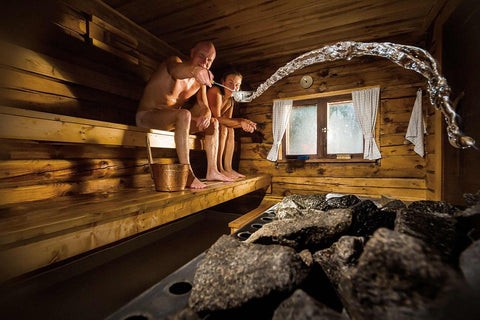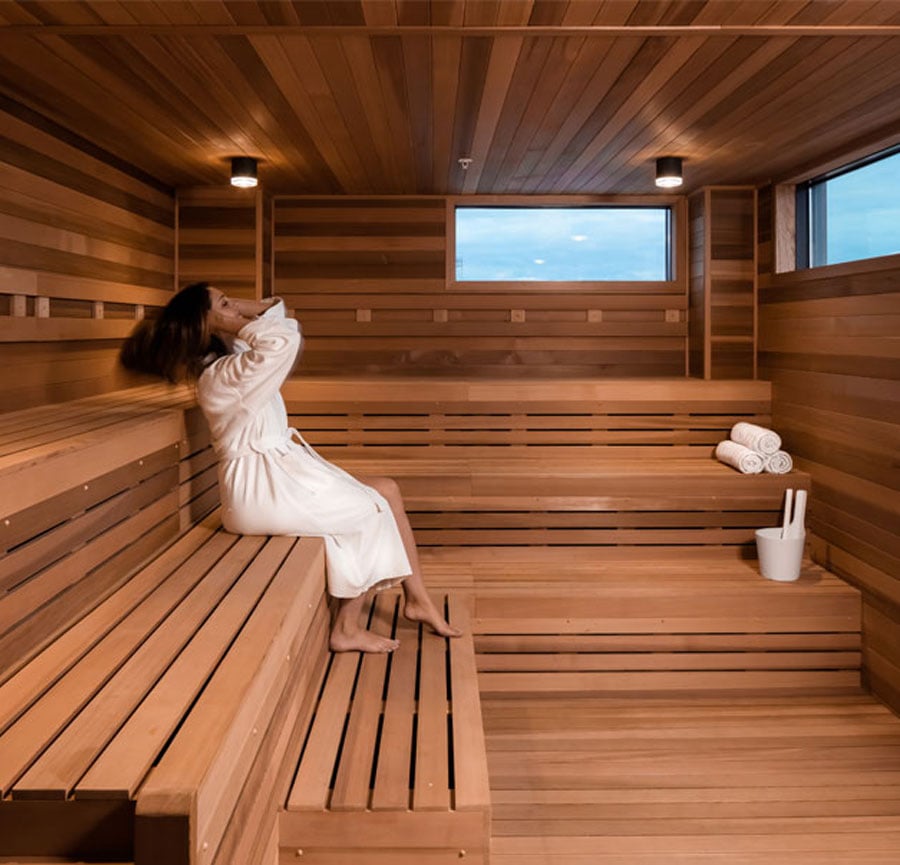Getting My Traditional Sauna To Work
Getting My Traditional Sauna To Work
Blog Article
The Ultimate Guide To Traditional Sauna
Table of ContentsEverything about Traditional SaunaThe 6-Minute Rule for Traditional SaunaThe smart Trick of Traditional Sauna That Nobody is Talking AboutMore About Traditional SaunaThe Buzz on Traditional Sauna
The majority of the weight shed in a sauna is water loss and is re-gained upon rehydrating. Without a doubt sauna can be an essential component of a healthy weight loss program. To check out the distinctions between conventional and IR saunas, I will certainly divide these into verifiable, academic, and fabricated distinctions.Thus, the most popular point in the saunawhich goes to the ceiling directly over the sauna heateris usually in between 185 and 190 F. Claims that a traditional sauna exceeds 200 F is just not true and not applicable for electric saunas sold in the United States. The temperature for a far-infrared sauna is generally set between 120 and 140 F; however, unlike the typical sauna, the goal in and IR room is not to attain a heat.

When a typical sauna has been properly warmed, the sauna walls are warm, the air temperature has attained set temperature and the rocks are very heated. As a fascinating side note, the warmed wall surfaces and the rocks are discharging far-infrared warm, integrated with the heated air, to produce an "enveloping warmth".
Things about Traditional Sauna
When the high temperature is accomplished, the elements cycle on and off to maintain the heat. The majority of traditional sauna customers enjoy putting water over the rocks to create steam to raise sauna moisture degrees. The advantages of pouring water over the rocks include: making the space a lot more comfortable, moistening the nasal passages, and allowing the use of aromatherapy by mixing important oils with the water.

When the energy enters the body, it creates the body temperature to enhance and ultimately results in sweat. In an infrared sauna it is very important for the emitters/heaters to stay on nearly frequently. Given that there is no mass of rocks to keep warm, the sauna will cool down if the emitters closed off.
The Only Guide for Traditional Sauna
As mentioned over, the sauna bather in an infrared space desires to place himself before running emitters to obtain maximum advantage from the heat. The home heating time for the 2 spaces can be extremely various, depending upon exactly how the spaces are made use of. For a conventional sauna, a bather needs to allow 30-40 minutes for the space to achieve a desired temperature you can try these out level and to correctly pre-heat the rocks.

A well created sauna will normally achieve a temperature level of 150-160 F in concerning 30-40 minutes (Traditional Sauna). For hotter temperature levels, the space might need to heat for a longer period. As soon as the space accomplishes set temperature level, the heating unit will certainly cycle on and off, normally operating about 50% of the moment. The protected walls and the heated rocks will keep the room warm and at secure temperatures.
To some, 15 mins was "wasted" while the infrared energy heated the wood panels instead of heating a body, while others locate a pre-heated space to be extra comfortable and believe a raised beginning temperature is required to begin perspiring. The length of recommended use for each area is about the same (10-15 minutes per session); however, because of the reduced air temperatures and the capacity to feel the impacts of infrared warm much faster than a traditional sauna, it is not uncommon for a person to spend a total amount of 20-30 minutes in an infrared sauna.
Some Known Details About Traditional Sauna

The typical expense per kWH of electrical energy in the U.S. is around $0.11, so a 4.5 kW heating unit will certainly set you back about $.50 to run for one hour, if the heating unit runs continuously for one hour. Usually a sauna heater will certainly run for 75% of the first hour and 50% of succeeding hours on since the elements cycle once the set temperature is accomplished.
A two individual far-infrared room is normally literally smaller than a conventional sauna, often regarding 4' x 4' or Your Domain Name smaller. The IR home heating system is normally 1.5-1.7 kW utilizing a 120 volt 15 amp plug-in solution. Because the space can be utilized sooner than a sauna room, we will certainly presume the area is utilized for to of an hour consisting of warm up time.
Ultimately, there is a rarely talked about difference in the social check this experience between both areas. While our society has shed several of the social advantage of the traditional sauna experience, it can be extremely socially gratifying (Traditional Sauna). From family members time in the sauna, to heart-felt discussions with better halves, to sauna partiesthe traditional sauna experience can cause intimate mingling
Indicators on Traditional Sauna You Need To Know
Many higher end infrared areas consist of colored light therapy, noise systems and full-glass fronts.
Report this page